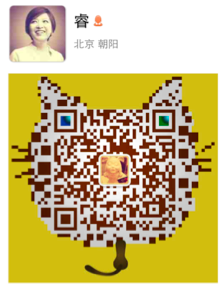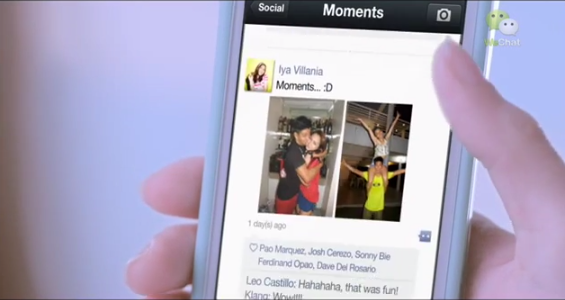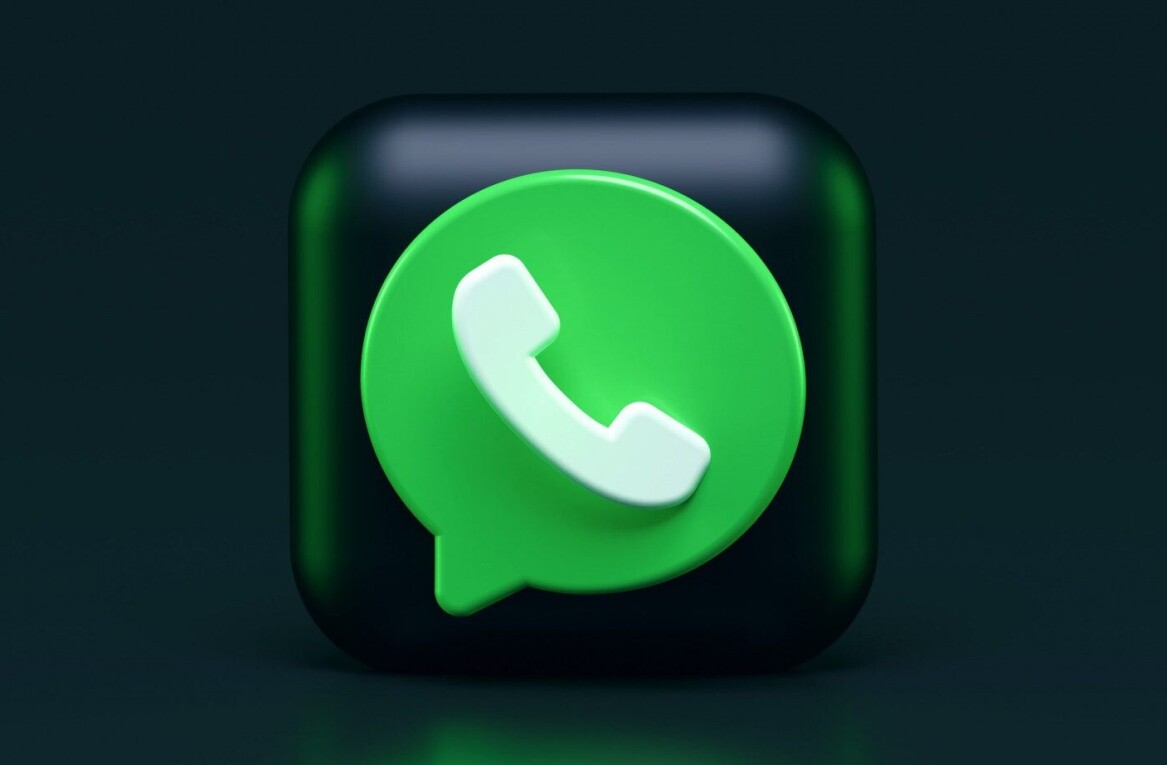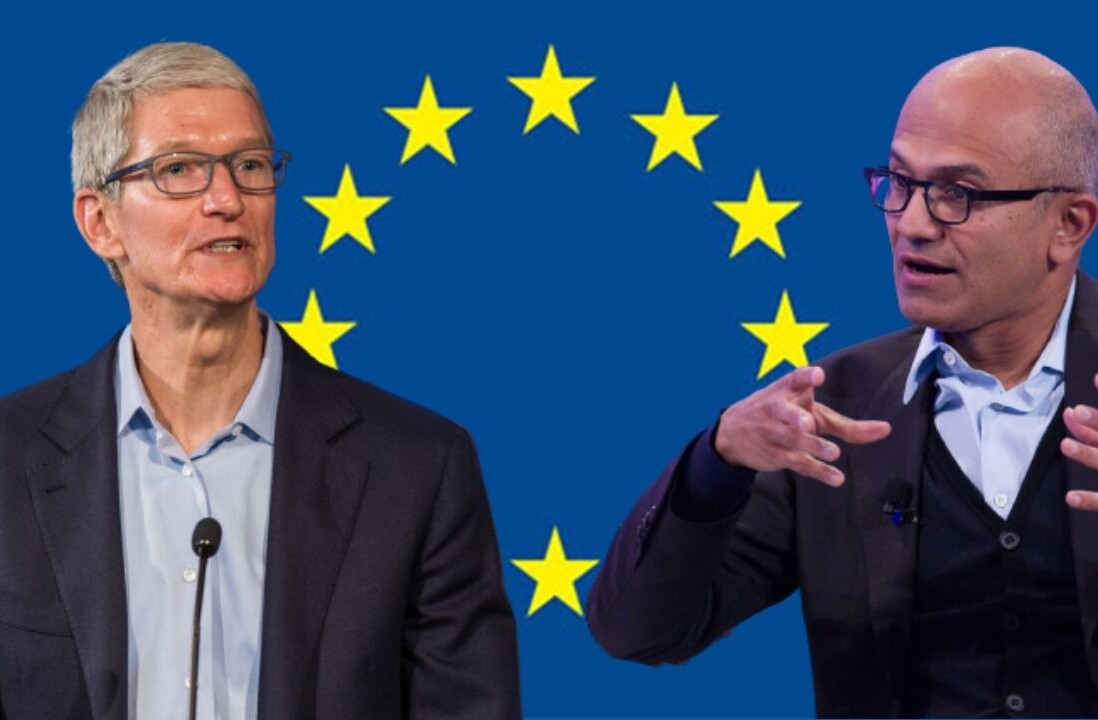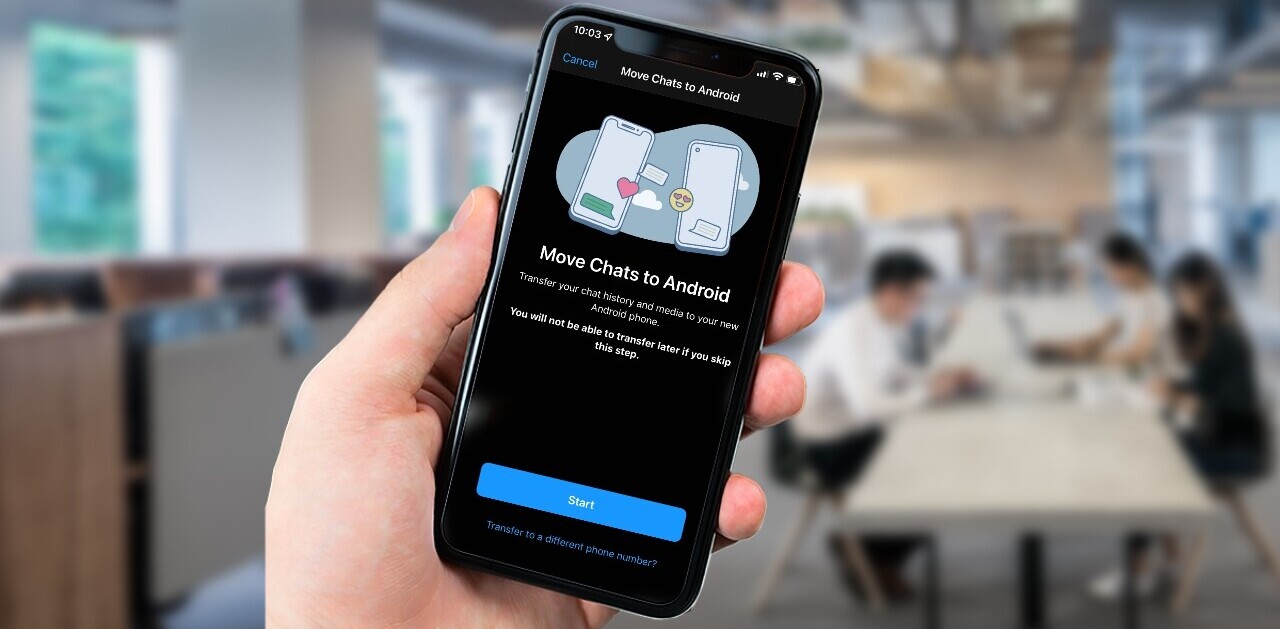
Rui Ma is a Venture Partner at 500 Startups, a leading accelerator and seed investment fund in technology companies.
Tencent’s trailblazing WeChat app is often referred to as the “Chinese WhatsApp.” But WeChat is not just another messaging app. It is a messenger plus social network plus social media, all on top of an extendable transactional platform.
To see why WeChat can potentially be a much bigger business than the traditional chat programs, it’s only important to understand how WeChat users interact with it.
I am only going to focus on China, because that’s where I live and the market with which I am familiar, and since some of the features that make WeChat completely kickass in China may not necessarily work well overseas.
And also because 300mm users in a smartphone market that grew 79% last year to over 400mm is probably sufficiently interesting to warrant its very own analysis.
Before you discount my assertions that WeChat is innovative, in useful, logical, and thoughtful ways, I would like to give you some background on my experience with social media and interactive apps/sites — my credentials as a user, if you will.
In the US, I am a long-term user (although not necessarily lover) of Facebook, Twitter, LinkedIn, Instagram, and WhatsApp. In China, I have used, with varying regularity, Renren, Kaixin, Weibo and Momo before WeChat.
I also use Viber and Skype frequently on my mobile – Line as well, but far less frequently. I’m not one of those investors who download every app I hear/read about or am pitched — but I have been on WeChat since it was way under 20mm users, and on average, I’m guessing I open it more than 50 times a day.
Wow! 50 times a day is a lot right? Yes and no. As this recent NYT article notes, it seems that I am in good company — plenty of Chinese people are on WeChat everyday … some for hours.
So here we go: the reasons why WeChat is much more than just another WhatsApp-type messaging app.
WeChat is optimized for Chinese consumers
Hold to Talk
WeChat began with a hold to talk feature that some consider a gimmick. This feature isn’t quite as relevant for Western users, but for Chinese people, it’s actually quite useful.
Why? Simply put, the QWERTY keyboard is not optimized for the Chinese language. Of course, there are input methods that are faster than typing in pinyin (which is based on the 26 letters of the English alphabet), and modern software has made significant leaps in predictive and fuzzy logic.
Nevertheless, even for those that are fluent in both Chinese and English, it is more difficult to type in Chinese. Ease of use can convey a huge competitive advantage, a fact that Sogou leveraged with its superior input method, which enabled it to subsequently launch a billion-dollar search engine business.
Without going into too much detail, the core differences are:
- Chinese typists must type the pronunciation then select the appropriate character, which is not sped up by that much even with a lot of the aforementioned logic upgrades.
- Pinyin is based on Mandarin, and many in China often speak a dialect that has different pronunciations which don’t translate well to pinyin. Additionally, many have never even learned pinyin.
- The English language is conducive to abbreviations (i.e. ASAP, OMG). This advantage doesn’t really exist in Chinese.
- Users who need to mix languages need to toggle between different input methods. I have to do this frequently, and it is slow and painful.
So aside from the fact that there are obvious cases where voice can deliver more convenience to the speaker and greater sense of intimacy to the listener, WeChat, just by putting in push-to-talk, had already provided more utility to users than SMS and even its own QQ Instant Messenger.
While I don’t use voice as much as I used to (my contact list was only close friends as opposed to nearly 1,400 strong), I notice that it is significantly easier for my computer engineering mother and my computer literate grandmother to use voice over text.
QR codes
WeChat incorporates QR codes into many elements, such as adding a new contact, or entering into a group chat. Prior to WeChat, I had never scanned a QR code in my life. But in China, I began to see how it is actually useful.
The Chinese language uses characters, not Roman alphabets. This makes it not only difficult for the Chinese to pronounce words, but also individual letters. That explains why a lot of Chinese URLs have numerals, such as this famous finance site.
Even my WeChat ID, “missruima,” which really just contains my name in pinyin, is difficult for people to spell correctly.
Solution? Scan the following code and do away with all manner of typing. In fact, I’ve begun to include it at the end of every PPT presentation I make, and it’s a funny sight to see at least a dozen or so hold up their phones and send me a WeChat request right then and there, via QR code.
WeChat is a social network
Despite many attempts, a dominant social network in the sense of what Facebook is to the U.S., for example, hasn’t really emerged in China. It hasn’t helped that neither Facebook nor Twitter are accessible in China.
But that means there was a vacuum in the market, and so … enter WeChat Moments. It is, hands down, the simplest photo-sharing experience I can think of for a non-photo-sharing app. It lets you put in text (there might be a limit but so far I haven’t hit it) and if you want, up to 9 photos, mention up to 10 friends, and specify your location if you prefer. Your friends can Like or Comment like any other network out there.
That’s all Moments is for, and that’s all it does. You can’t tag faces, and your photos don’t get sorted into unwieldy albums. You don’t have to put in descriptions for each photo (in fact, you can’t). It’s aptly named “moment” because it’s just that, a stream of posts (photos or other content) from your contact list.
Sure, Facebook status updates and photo sharing accomplish a lot of the same, but I actually think Moments allows for a better social networking experience. Here are the 2 main reasons why:
1. Your contact list is not visible. Neither total number nor content.
Why’s this important? Because it keeps a sense of privacy, intimacy, and authenticity. It doesn’t degenerate into a popularity contest of who has more friends, which friends do they have, or how many friends do we have in common. You get the point.
Also, this destroys zombie accounts, which plagues Weibo. There’s no point in buying fake accounts because no one can see how many friends or fans or likes or anything really, that you have, unless they are already on your contact list. Everything is shaped by that initial authentic and private one-on-one interaction. And it really is quite private. Because different from Facebook …
2. You can only see the interactions of those on your contact list (i.e. your “friends”). That’s it.
This matters so much. Let me explain, because it confused the heck out of me initially.
Suppose I put up a photo, which receives a comment from my good friend Jack. Jack doesn’t have any other friends in common with me and makes a totally obscene inside joke. No one else but me sees the comment, not unless they are also friends with Jack.
My friend Jacqueline writes a comment, as does my friend Jeff, and they are friends with each other. There are 30 other likes on the photo but none of them are friends with Jacqueline or Jeff. What do Jacqueline and Jeff see? Just each others’ likes/comments, and my responses (unless directed at others not on their contact list). They do not see the 30 other likes or 10 other comments from people they do not know.
What does this create? In the case of Jack, it creates the opportunity for me to have an intimate conversation without having to especially go initiate it (post to Jack, then post to “public”). In the case of Jacqueline and Jeff and myself, it reinforces a mini circle of trust, while cutting out the noise of strangers.
This creates more authentic interactions all around. It alleviates pressure on the poster (are people going to engage with what I post? who cares?) as well as the commenters (I can be myself, and I’m not competing to be wittier than the next person).
Basically, what this very simple mechanism does is it is a sort of proxy for “relationship closeness” via interactions amongst shared friends. The primary implication, in my opinion, is that I feel much more in control of my network, and will add even those who are much more loosely affiliated with me (i.e. “Twitter followers”) without feeling like my inner circle of more intimate relationships is subject to voyeurism from those I do not know (as) well.
In other words, it allows me to fold my Facebook and Twitter networks into one without feeling overexposed (hence my willingness to put my WeChat account on my business card and all my presentations, but not my phone number or Facebook ID).
Are you beginning to see what I mean? WeChat is far more than a messenger, and honestly, if it had stopped at just being an awesome social network, I would’ve already gawked in awe, but yes, it’s even more than that …
WeChat is a social media
And here is where I think it really gets interesting. WeChat is actually Facebook and a lot of Twitter rolled into one.
WeChat started off with your real-life phone book. How did it do that? Partly, I think, by chance.
But let’s break this down — why is Twitter valuable, to the user? Well, to me, it allows me to see what people who share my interests are doing, reading, saying. Occasionally, we interact in direct conversation and end up sharing contact information for deeper dialogue. But mostly, we circle around a pretty defined set of topics, which may arise because of shared geography, hobby, or any marker, really.
In WeChat, these are themed group chats and official accounts.
1. Group chats
WeChat 5.1 defaults each user to be able to create groups of 100 people (it used to be 40). The current maximum is 500. Sounds unmanageable? Not really.
Firsthand experience tells me that most of my groups below 200 members are quite productive and manageable, especially if there is a motivated moderator and clear theme. I have about a dozen organized by different angel investor groups and entrepreneurs, a few for the schools I’ve attended, as well as interests and entertainment.
These roughly reflect the topics I’m interested in keeping up-to-date about, and are not that far away from my Twitter follows. Except it’s already curated for me. Am I going to Shanghai soon? Maybe I’ll keep an eye out more on that room. Or am I really nervous about my Bitcoin holdings? Then better see what the other bitcoiners are saying.
And what do people share? Links to good reads, photos and videos, just like what I mostly click on via Twitter. WeChat has done an amazing job of making the groupchat and sharing experience pretty damned easy.
And if I don’t have anything immediate to say? I can just stay in the room and “listen.” I wrote in an earlier article that I often heard news first in WeChat before I read it elsewhere. It’s true. That’s about half the time.
The other half of the time I notice I’m reading a lot of articles from a particularly awesome media source (or individual writer/curator) and I add their …
2. Official accounts
Two types of “official accounts” exist on WeChat – service and subscription (RSS feed). I mostly interact with the subscription accounts for now, which is exactly what it sounds like – subscribed RSS feeds. Anyone with a PRC ID can register for one, although it is not an automatic approval process.
I am, for example, registered with all the major Chinese tech media, who usually push out content once or twice a day of their top 2-5 headlines. I can then read the (mobile-optimized!) article directly in the app. I can share this easily with my contacts, group chats, or straight to my Moments and include some witty remark.
WeChat is a platform
[Note: I’m on the Chinese version of WeChat, which seems to be something like two product releases ahead, so I apologize if you open up your English version and do not see any of what I’m talking about.]
China’s version of Yelp has been integrated into WeChat forever now, it seems, as are music and video players, and my personal favorite, the air quality index app. There is a social gaming platform, which shows you how many of your friends are playing each game, compete against them as a matter of course, and also allows you to send invites to them via WeChat.
As of this writing, the top 3 games on the iOS store in China are all WeChat-“enabled” games.
WeChat has also launched all sorts of mobile wallet functions, allowing you to pay for more mobile minutes, movie tickets, split bills, or buy select products.
I don’t personally use any of them (yet), but initial traction seems strong. Taxi-booking app Dididache made $170K in bookings in the first seven days, travel meta-search site Qunar achieved 10 times that amount in its first ten days, and smartphone maker Xiaomi sold 150K phones in 10 minutes.
Anything that allows people to plan out and pay for (transact) what they will do when and with whom (communicate!) on-the-go (mobile!) is probably up for grabs. No wonder fellow Internet giant Alibaba feels so threatened by WeChat, and has repeatedly taken measures to defend against it.
Conclusion? WeChat is not just a WhatsApp competitor
WeChat is much more than a messaging app, it is social network + social media + interest/news feed + rolled into one on top of a platform that was (I believe, given Tencent’s DNA in gaming) always meant to monetize off of real transactions – whether they be micro such as in-game virtual goods or more substantial such as traditional e-commerce.
And for those of you still with me… I just have one last thing to say.
Some users think WeChat is starting to look bloated, and yes I agree that danger exists. However, as long as it stays focused on giving users that authentic communication experience, and focus on connection discovery, maintenance and growth, I am incredibly bullish on the WeChat team to deliver a reimagined and much streamlined mobile communications and transaction experience.
 Detail-oriented readers will note that I spent an inordinate amount of time trying to explain why WeChat excels as a social network and media, and only briskly went through its platform capabilities. That was intentional. Distribution for mobile apps is difficult no matter which market you go to, and China is no exception.
Detail-oriented readers will note that I spent an inordinate amount of time trying to explain why WeChat excels as a social network and media, and only briskly went through its platform capabilities. That was intentional. Distribution for mobile apps is difficult no matter which market you go to, and China is no exception.
I wanted to make sure I understood why WeChat is here to stay, its central role in the app ecosystem, and how it’s justifying its existence on my phone as by far, the number one used app (aside from native e-mail or browser client) for over two and a half years.
What were the thoughtful details that made it such a good experience? What were the design features that made it incredibly sticky and useful to a Silicon Valley-bred brat who readily had access to more “mature” social and communications products (WhatsApp being one)?
Once I worked those out in my head, I could see that a lot of possibilities existed to exploit the new crop of activities and behaviors that WeChat was enabling and training its hundreds of millions users to do; things I could actually bet on, as an early-stage investor.
We’ll see how open the WeChat platform ultimately becomes, but the current prognosis is good, and if I had to give a forecast, I’d say it’s sunny and clear.
Embarrassing Disclaimer: I was not hired by Tencent to write this op-ed piece. I have never been paid by Tencent, directly or indirectly, to do anything (unfortunately.) My chance to have had that happen was about 3 years ago, when I interviewed for Tencent’s corporate development group.
At that time, WeChat was about 20mm users, and Weibo was worth something like $1.5Bn, or so I read somewhere in some lousy Wall Street report. After some trivialities, my interview with the M&A Director consisted solely of the questions – how much is WeChat worth and what would you do with it? I don’t even remember if I got to the second question because I answer “$300mm” to the first and knew I had immediately lost the interviewer’s interest.
What was I thinking?! Well, it is clear I wasn’t. If you think I have grown some brain cells since then, please add me on WeChat — my handle is “missruima” (or you can use a WeChat guru tip and scan the QR code mentioned before).
Featured image credit: Shutterstock/dolphfyn
Get the TNW newsletter
Get the most important tech news in your inbox each week.

